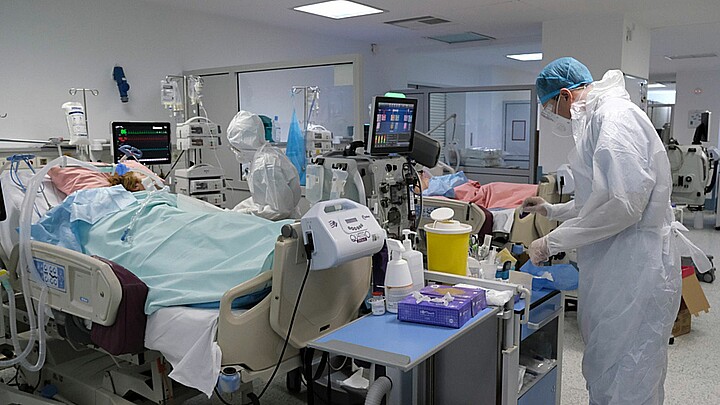Health
Monkeypox Symptoms: The rare disease is spreading around the U.S. and Europe
Transmission occurs mainly through large respiratory droplets, although prolonged face-to-face contact is necessary
May 19, 2022 3:15pm
Updated: May 22, 2022 2:38pm
The appearance of a case of so-called monkeypox in the United Kingdom on May 7 set off alarm bells about a new viral disease. Since then, the disease began to spread, and nine people are currently reported to be infected in Great Britain.
The United States reported its first case on Wednesday, a man who had recently traveled to Canada. Although he was hospitalized, he is reported to be in good condition.
In Montreal, Canada, health authorities have identified 17 probable cases of monkeypox and have begun an investigation to trace of transmission of the disease to its origin.
The smallpox strain has also been reported in Spain and Portugal. However, authorities say that close and prolonged contact between people is required to become infected, according to Judit Villar, coordinator of the international health unit of the Hospital del Mar in Barcelona, quoted by El Mundo.
As of Wednesday, 23 cases were reported in Spain in "young adults, and most are men who have sex with men. But not all cases are like that," according to the general director of Public Health of the Community of Madrid, Elena Andradas.
Portuguese authorities have confirmed 14 cases and are investigating other suspected patients.
The virus
Monkeypox is caused by the orthopoxvirus, which comes from the same family of viruses like smallpox.
"It manifests with pustular eruption (pus-filled pimples) and is a systemic disease that can vary from a mild form… to a more severe disease and even death," explained the advisor on Disease Prevention and Control of the Pan American Health Organization (PAHO), epidemiologist Enrique Perez, at a press conference on Wednesday.
According to the European Center for Disease Prevention and Control (ECDC), transmission to humans can occur through contact with an infected animal or human, or with human body material containing the virus. Transmission occurs primarily through large respiratory droplets, although prolonged face-to-face contact is necessary.
The virus can also enter the body through body fluids, infected material, or indirect contact with infected material.
In humans, the symptoms of monkeypox are similar to those of smallpox, although milder. They include fever, headache, muscle aches, back pain, chills, and exhaustion. The main difference is that monkeypox causes the lymph nodes to swell (lymphadenopathy), whereas smallpox does not.
It is normal to develop a rash, which often starts on the face and then spreads to other parts of the body, particularly the hands and feet, including the genitals. The disease usually lasts 2 to 4 weeks, according to the source.
However, recently detected cases report a preponderance of lesions in the genital area. The rash goes through different stages and may resemble chickenpox or syphilis before finally forming a crust, which then falls off, reported Infobae.
In Africa, case fatality rates for this disease are between 4% and 22%, although the majority of patients in the region are children. Two of those infected in the United Kingdom traveled from Nigeria, so it is likely that they have the West African strain of the virus, reported BBC Mundo.
Mass vaccination against smallpox "allegedly" would have stopped monkeypox infections for a time among humans, according to a 2005 article mentioned by Infobae.
But cases resurfaced, in part, because of a lack of immunity in later generations. For example, more than 450 cases have been reported in Nigeria since 2017, where the last major outbreak of the disease was reported, the U.S. CDC reported. In light of this, different European countries are studying the reinforcement of smallpox vaccination.









